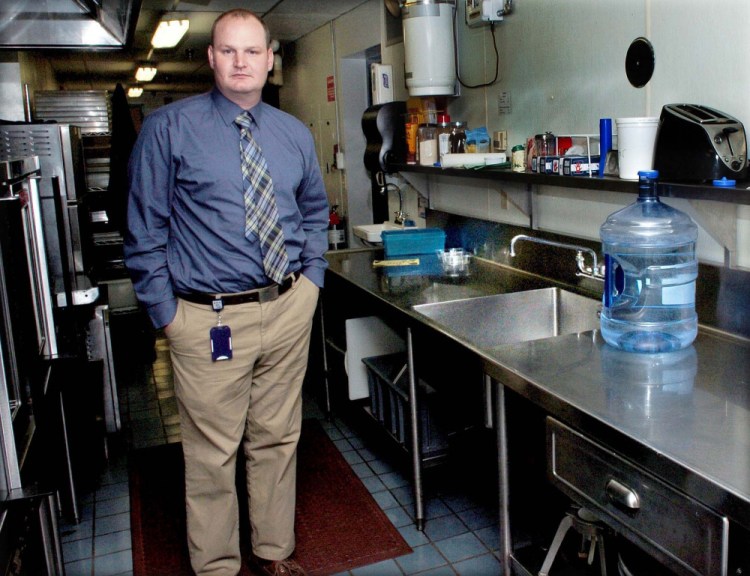After weeks of using only bottled water for drinking and cooking, two schools in Fairfield-based School Administrative District 49 are allowing students to use tap water again.
Benton and Clinton Elementary schools initially put water out of service after tests revealed dangerously high lead and copper levels above the federal limits at which a school has to take action. After replacing water fixtures throughout the schools and conducting multiple rounds of testing, the principals say the water in the schools is now safe to drink again.
Benton Elementary put water back in service on Friday and Clinton Elementary did the same around Dec. 6.
Action must be taken when more than 10 percent of samples show that a water supply’s lead level is above 15 parts per billion for residential areas and 20 parts for schools, or when a water supply’s copper level is above 1.3 parts per million, according to the Environmental Protection Agency.
Lead is most dangerous to children, because it can cause developmental and behavioral delays. High levels of copper can cause harmful symptoms such as nausea and irritation, according to the Centers for Disease Control and Prevention.
The original tests at Benton Elementary, conducted by the Kennebec Water District in October, were taken at three locations throughout the school and showed levels of lead at 670, 78 and 57 parts per billion.
The school has since replaced all water fixtures, according to Principal Brian Wedge, and the water district replaced the water meter with an updated, lead-free version.
Teachers are regularly running the faucets in classrooms for a few minutes on Mondays in an effort to “flush” the water, Wedge said. Flushing gets the water that has sat in the pipes overnight out of the system, so the water people do get comes directly from the water utility’s system.
After all fixtures were changed, the school hired Waterville engineering firm A.E. Hodsdon to take additional samples. All test results were below the federal action level.
The samples, taken Dec. 1, showed lead levels ranging from 1.29 to 13.9 parts per billion at four testing sites. The highest level was found in the water at the boiler room spigot, which once had the highest lead level – 670 parts per billion.
The firm also found that the water samples had copper levels below 0.5 parts per million.
After the district received the unexpected results from Benton, it had tests done at all of its other schools.
A.E. Hodsdon found that Clinton Elementary School also had levels of lead and copper above the federal limit for schools at some areas in the building.
The results from Nov. 14 showed one site with a lead level of 150 parts per billion and another site with a copper level of 1.5 parts per million.
After faucets and fountains were replaced throughout the school, samples from the school’s water showed all levels to be within federal limits. The town also paid to replace a water meter at the entrance to the school.
Lead levels in the water samples ranged from 2.64 to 10.2 parts per billion, and copper levels ranged from 0.12 to 0.82 parts per million.
Three Maine drinking water associations have since partnered with the state’s Drinking Water Program in an effort to provide financial and technical support to schools and water utilities for voluntary lead testing. The program will pay for public water utilities to conduct up to 10 tests at each school that they service.
Neither the state nor the federal government requires schools to test their water if they’re serviced by a public water utility. While water utilities have to test their supplies, lead leaching often occurs after the water enters a building’s system, which may have older pipes that contain lead soldering.
Copy the Story LinkSend questions/comments to the editors.




Success. Please wait for the page to reload. If the page does not reload within 5 seconds, please refresh the page.
Enter your email and password to access comments.
Hi, to comment on stories you must . This profile is in addition to your subscription and website login.
Already have a commenting profile? .
Invalid username/password.
Please check your email to confirm and complete your registration.
Only subscribers are eligible to post comments. Please subscribe or login first for digital access. Here’s why.
Use the form below to reset your password. When you've submitted your account email, we will send an email with a reset code.